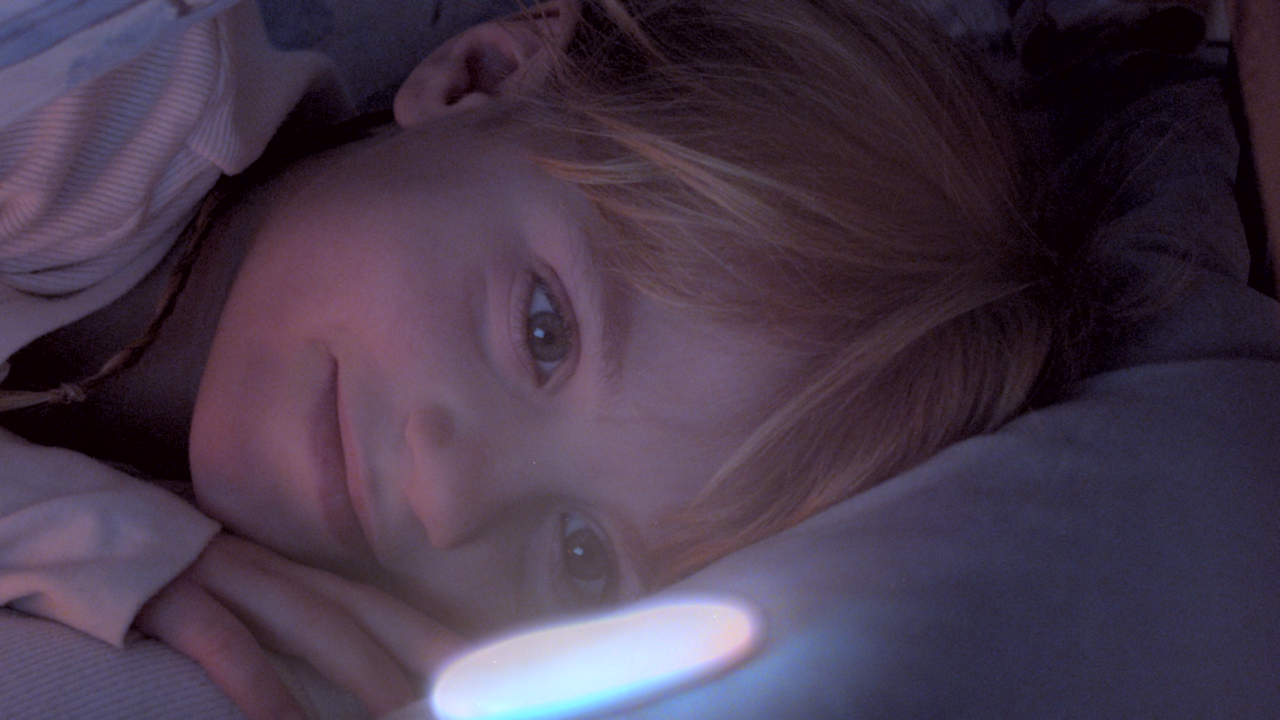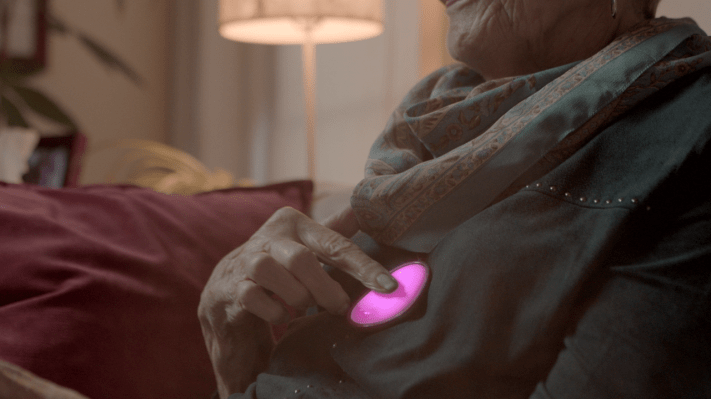Editor’s note: David Rose is the CEO at Ditto Labs, an MIT Media Lab researcher and the author of Enchanted Objects.
Three squeezes means “I love you”; two squeezes means “I’m scared.” These are examples of the special language my 11 year-old daughter and I share. We developed patterns to relay assurance, fear, surprise and “check out the crazy outfit in that direction.” It’s useful and fun to have a touch-based language, plus it’s fast, discreet and intimate.
Haptics, the science of touch, derives from the Greek haptikos meaning “being able to come into contact with.” Touch-based interfaces are one of the modalities we explore at the MIT Media Lab.
Prototyping haptic interfaces at MIT
At the Tangible Media Group at MIT, we explore new materials for human-computer interfaces. Some change shape and rigidity based on digital inputs. For example, a group of students just prototyped a car door handle that transforms from smooth to bumpy to avoid “dooring” an oncoming cyclist.
The highest hurdle for adoption of touch technology is the difficulty of inventing, learning and recalling a large vocabulary of novel gestures.
Haptic interfaces have some inherent advantages: 1) they are very fast to “read”; 2) they can be embedded in everyday objects and gestures; and 3) our sense of touch may be the best modality to convey human emotion. For example, the LumiTouch looks like an ordinary picture frame, but when you squeeze each side, it sends a colored glow to the other person’s frame. The colors could signal “I’m thinking about you,” or “I’m mad at you,” or whatever color-mapping the couple invents. Proverbial Wallets, created in collaboration with Bank of America, are ordinary leather wallets that become harder to open as you exceed your monthly budget. While these examples are only prototypes, haptic interfaces will soon be available for everyone.
An intimate device for pairs of people
Another team of product designers and engineers I have worked with are creating a two-way haptic interface, which takes some of these ideas about touch interfaces out of the lab and into people’s lives. Smartstones look and feel like a smooth, palm-sized, river stone. Each pair of stones allows two people a new, dedicated, subtle communication channel that uses gesture, touch, light and sound.
In Enchanted Objects, I group the coming world of connected things into six superpowers, drives that we have all shared for a millennium, and that technology attempts to satisfy. Smartstones specifically attempts to gratify our wish for telepathy — to know the mind of another person.
It’s common to trade and wear pairs of objects, like wedding rings and friendship bracelets. And Smartstones are designed for similar types of intimate relationships: Best friends, father-daughter pairs, elderly parents and remote family members and caregivers.

Touch communicates emotion most effectively
I believe the highest hurdle for adoption of touch technology is the difficulty of inventing, learning and recalling a large vocabulary of novel gestures. Companies like Smartstones and products like Lumitouch aspire to create a new universal non-verbal language, parallel to what Braille did for the blind, and sign language for the deaf. That’s a bold ambition. Their best strategy, I believe, is to communicate emotions rather than specific nouns and verbs.
In a classic perceptual psychology experiment, pairs of strangers were asked to communicate emotions through touch alone. The “encoder” was given one of 12 different emotions, then touched the “decoder’s” forearm through a curtain. The person touched had to then choose which emotion they thought the encoder was communicating:
“The results indicated that participants could decode anger, fear, disgust, love, gratitude, and sympathy at above-chance levels. […] For example, sympathy was associated with stroking and patting, anger was associated with hitting and squeezing, disgust was associated with a pushing motion, and fear was associated with trembling.”
The coming world of Enchanted Objects
The products coming from MIT are provocative examples in the massive migration from smartphone apps to tangible, dedicated, enchanted objects. The evidence for shift in human-computer interface is everywhere from wifi-connected thermostats and mirrors, to bluetooth tennis racquets, jewelry, lightbulbs and more.
Last year Google purchased Nest for over $3 billion, Samsung acquired SmartThings, Apple, Microsoft, Intel, Fitbit, Withings, Jawbone, and dozens more are competing for the real estate on your wrist, and Cisco forecasts 50 billion connected things by 2025.
Our sense of touch is uniquely designed to process information quickly — often without the neural round trip to the brain.
The falling cost of microchips, the ubiquity of wireless, and the promise of reoccurring revenues which come from converting objects into services are driving almost every product company to consider a cloud-connected product. If they are designed well — to respect our attention, play nice together, and value our privacy — they will enchant us.
Touch allows us to communicate without the expensive cognitive task of typing or speaking. Our sense of touch is uniquely designed to process information quickly — often without the neural round trip to the brain. Our skin processes subconsciously. When I’m holding hands with my daughter, I unconsciously sense her state, even if we aren’t sending squeezy-patterns to each other. Smartstones have the potential to relay these same messages at a distance reducing social isolation and without the unnecessary distraction of texting.
Where wearables today are mostly focused on logging and visualizing data, Smartstones is connecting and enabling people to communicate on a more visceral/primal level and pioneering a new field of non-verbal communication. Imagine all of the possible applications for using sensorial, nonverbal communications, as an interface for proximity and contextual messaging, even as a means to enhance augmented-reality applications.
As interfaces of touch become more pervasive, they will reshape how we communicate at a distance — with subtly, expressiveness and speed.
